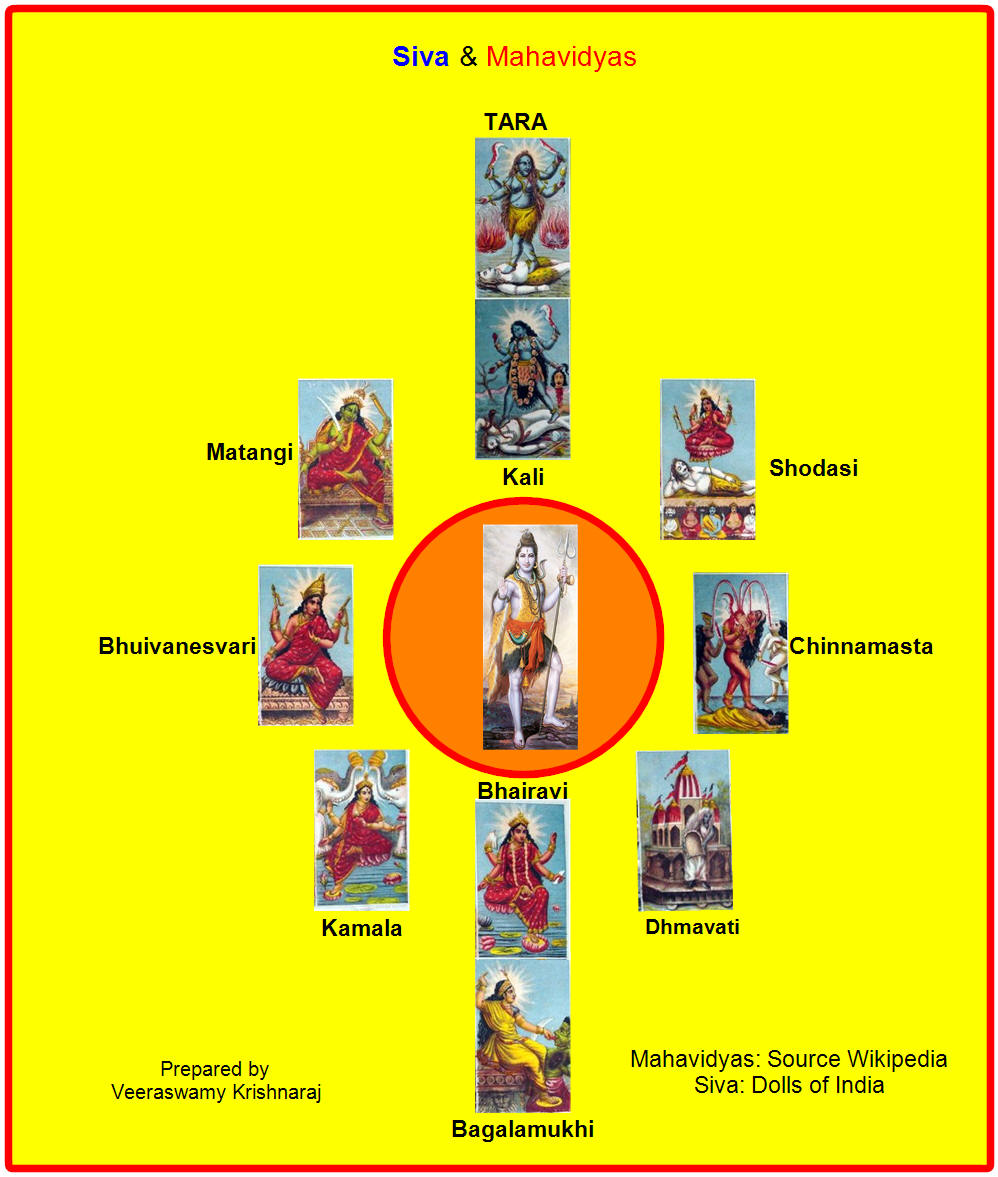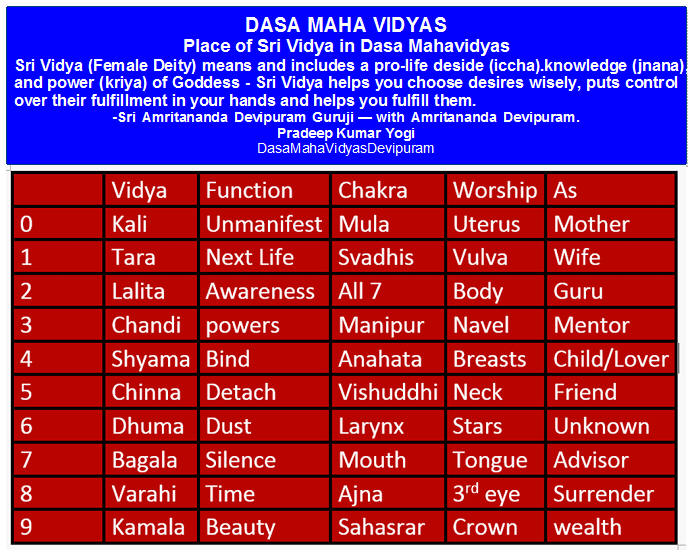Veeraswamy Krishnaraj
There was another sacrifice. Daksha’s daughter,
consort of Siva, heard the news over the celestial grapevine. Sati saw
the finely clothed celestials and their consorts fly by in their aerial
cars to attend the sacrifice. Sati felt left out because she wanted to
meet her mother, sisters and their consorts at the sacrifice, which was
the place to be then. She pleaded with Siva for permission to attend the
sacrifice. Siva tried to reason with her. Daksha’s wickedness, lack of
judgment, and failure to see the greatness of exalted Souls compromised
and canceled his learning, austerity, wealth, beauty, youth, and
pedigreed heritage. They (Siva and Sati) should not visit Daksha clouded
by poor judgment, suspicious mind, and anger. He dissuaded and forbade
her from attending the ceremony, for he foresaw death of Sati and
Daksha, the latter inflicting indignity on Siva, the Supreme Being, the
Lord of the Universe.
Sati wanted to go. Siva forbade. Dakṣa
thought little of his son-in-law Siva. Who wants a S-I-L with a matted
hair, white ash on the body, rags for clothes, a begging skull-bowl ...
Sati became angry with Siva. Sati thought Siva was
shrouded and drunk with vanity of a husband. She wanted to teach him a
lesson. She became
Jagadamba. She developed an antipathy to her father and her husband. She
opened her eyes spewing fear and parted her lips indicating parting ways
with Siva.
Siva Maheśvara
became deluded at the sight of Sati-Jagadamba. Siva wondered whether she
could be his real consort. He looked at her. She was clad in space. Her
golden complexion lost its luster. She became pitch-dark like the
collyrium (Anjana). [Since then, she remained black, while Siva was
always white.] Her hair was unruly and flying in the air. Flames of anger
was emanating from her eyes. Her tongue was lolling out of her cavernous
mouth. Her four hands were flailing all over. She was drenching in
sweat. She wore a garland of skulls. She was talking thunder and flashed
lightning. On seeing the Tejas (razzle-dazzle), Siva lost his
self-control. Fear enveloped him. Peals of laughter emanated from her.
Siva wanted to take a flight out of there. She blocked him by splitting
into ten women in all ten directions. Siva was corralled.
(Ten directions are N; NE; E; SE; S; SW; W; NW; Above and Below.)
Siva was frightened to death.
He tried to run but could not. Now that Siva was subdued, she
became mellow. Siva shut his eyes and a little later opened them. Syama
(Black Sati-Jagadamba) was standing before him. Between the shut and
open eyes, the ten Mahavidyas became one woman. She wore a lotus-like
face, had large turgid breasts, wide eyes, unkempt hair, four hands, an
effulgent black body clothed in space and bathed in ten million suns.
Siva-Mahesvara was confused and questioned her on who she was.
Devi answered: "My Lord Mahadeva, I am Sati, your
consort. Don't you know me? Why do you look so confused?"
Siva replied: " You look black and induce fear in
me, unlike Sati (who is white). Who is this terrible being who stands in
my way in all ten directions? You don't look like Dakṣa's
daughter and my consort, Sati."
Jagadamba in the form of Sati-Syama replies: "I am
subtle beyond speech and comprehension. I am Sati, your consort. I don't
mean any harm to You. I was born a daughter of Dakṣa
and performed penance to obtain You as my husband. (Actually, Sati was
the adopted daughter of Dakṣa.)
I have assumed this form to destroy Daksha's Yajna.
I was trying to block Your exit only out of love for You."
Siva said: "Forgive me, O Paramesvari. I said many
unkind words to you. The great illusion blocked my vision. Tell me now
who these ten fearful forms are."

Sati in the form of Jagadamba replied: "O Mahadeva
consider yourself as the center; in front of you are Tara and Kali, the
former above the latter; behind you are Bagala below Bhairavi; to your
right is Chinnamasta; to your left is Bhuvanesvari; to the northeast is
Shodasi; to the southeast is Dhumavati; to the south west is Kamala; to
the northwest is Matangi."
The frightening ten: Tara had scissors in hands.
Dhumavati was ugly holding a basket.
Kali – The ultimate form of Brahman, "Devourer of
Time" (Supreme Deity of Kalikula systems). Kali was fierce standing on
supine Siva. .
Tara – The Goddess as Guide and Protector, or Who
Saves. Who offers the ultimate knowledge which gives salvation (also
known as Neel Saraswati).
Tara is similar to Kali in her disposition.
Tripura Sundari (Shodashi) – The Goddess Who is
"Beautiful in the Three Worlds" (Supreme Deity of Srikula systems); the
"Tantric Parvati" or the "Moksha Mukta". Sodasi sits on a couch having
Brahma, Vishnu, Rudra, and Mahesvara as the legs. She is a three-city
(-world) beauty.
Bhuvaneśvarī
– The Goddess as World Mother, or Whose Body is the Cosmos. Bhuvaneśvarī
is the sovereign of the universe.
Bhairavi – The Fierce Goddess. Bhairavi is deified
Fright.
Chinnamasta – The self-decapitated Goddess.
Chinnamasta self-decapitated herself causing three streams of blood from
her neck, one falling in the mouth of her own head, the second and the
third falling into the mouths of her attendants.
Dhumavati – The Widow Goddess, or the Goddess of
death. Dhumavati is personified smoke, poverty, widowhood...and sits in
a humongous cart without a moving force.
Bagalamukhi – The Goddess Who Paralyzes Enemies.
Bagalamukhi has the power to stun, immobilize, paralyze and subdue the
enemy. She pulls the tongue of liars.
Mātaṅgī
– the Prime Minister of Lalita (in Srikula systems); the "Tantric
Sarasvati" Mātaṅgī
is an outlier. She keeps company with people at the periphery, the
impure... and gorges on the leftover food (uchista).
Kamala – The Lotus Goddess; the "Tantric Lakshmi"
Kamala is a gentle goddess, auspicious, divine... and brings wealth and
prosperity.

Sati-Paramesvari says the following. All these forms destroy the fear of Samsara (birth and rebirth). These ten forms are the best among the 90 million manifestations of mine. Sadakhas worshipping my ten forms get Dharma, Artha, Kama and Moksa and also powers of causing Marana, Ucchatana, Ksobana, Mohana, Dravana, Stambhana and Vidvesana. These Mahavidyas are to be kept secret. You reveal Agama Sastras from your mouth. Agama and Veda are the two arms by which I support this universe. Vaishnavas worship the ten Mahavidyas with their heart abiding in me. My intention is to destroy my father's Yajna with your (Siva's) permission; you should let me go to the sacrifice." (Sati was upset with her father Daksa, because he did not invite her husband Siva and her for the Yajna. Yajna is not complete without the presence of Siva. Yajna is sacrifice and an essential element is the sacrificial fire (the divine Agni) into which oblations are poured, as everything that is offered in the divine Agni is believed to reach the Devas.--Wikipedia.).
[Artha (wealth), Dharma (Righteousness), Kama (desire), and Moksa (liberation)].
Marana (death), Ucchatana (ruining an adversary), Ksobana (causing agitation), Mohana (causing confusion), Dravana (Putting to or instigating fight) , Stambhana (Immobilization and paralysis),and Vidvesana (Stirring up hatred)
The above appears to be a good strategy in war. Nobody could have written a better manual of stratagems. Did Mahavidyas get credit for them?
Before her departure, she withdrew into her all ten forms out of which Ambika emerged. Another source tells that Tara merges with Kali and others simply vanish. Another source tells that Sati asks the Mahavidyas to attend to Siva in her absence, while she is away to Daksha's sacrifice. Students of Saktas (worshippers of or Sakti or Mother Goddess) point to the power and restraint Mahavidyas pose on Siva, thus, showing her to be a superior power. Saktas believe in Mother Goddess. Western analytical minds portray a picture of Sati as the victim of spousal and parental abuse and neglect, in that Daksha did not invite his daughter Sati for the sacrificial ceremony and Siva did not grant permission to His spouse Sati to go to the sacrifice. This is man analyzing and judging god and goddess. This is superficial and proximate thinking on the part of some minds; the deeper meanings and the internecine feuds and disputes among gods to bring forth a moral lesson to man does not even register in their minds. Siva and Sakti are one and each needs the other to form one whole. Sakti is not sequacious; Siva without Sakti is sava (dead); Sakti (Power) without Siva has no Consciousness. Siva being the Yogi of yogis foresees death of Daksha and Sati, if Sati were to attend the sacrifice. There is no spousal neglect or abuse in prevention of death. Daksha was a lout among the celestials because he offered sacrifice for the rise of wealth over spirit, when the embodiment of spirit, Siva, was not invited and every sacrifice demands the presence of Siva and offering of holocaust (burnt offerings) to Siva. Daksha never liked his son-in-law, Siva, because he was poor, smeared himself with ash, and wore animal skin and matted russet hair.
The view from the West, Sep/29/2008
The West suggests that there is a twist in the Daksa' sacrifice. Daksa was the follower of Vedic religion. The Siva devotees at that time were the Pasupatas on the rise, who the West says were subversive and disruptive. The destruction of Daksa's sacrifice was symbolic of growing importance of Saivism and Pasupatas, and the denigration of Vedic religion. According to legend, Rudra, a form of Siva created Pasupata Saivism when He destroyed Daksa's sacrifice. Pasupata sect opposed the Vedic Caste System and was supported by wise men. Pasupatas were the forerunners of Agamic Saivites. At human level, Lakulisa before the 6th Century was the founder of the Pasupata sect, which was mostly the sect of ascetics and Yogis. The householders had only to utter Siva Mantra Namasivaya to adhere to the sect. The ascetic is naked except for a piece of cloth covering his private parts. He was smeared with ash all over his body and did austerities among the five fires. He meditated in the temples. Once his guru declared he attained maturity, he was allowed to practice antinomian behavior, which included shouting obscenities, lewd gestures at women, idle prattling, pretend sleep, loud snoring on purpose and so on and so forth. The idea of this wild behavior was to victimize oneself by lewd or other behavior towards others and invite punitive response which eventually transferred good merits from the abuser to the ascetic perpetrator. Though the Pasupata ascetic was allowed to exhibit extravagant lewd gestures and his upright erect asset, he was to remain strictly a Brahmacharya without any private verbal or physical encounter with women. Most of the ascetics were of normal behavior though they were allowed by the Guru to practice such acts. Society and some Puranas were putting the breaks on this kind of behavior.